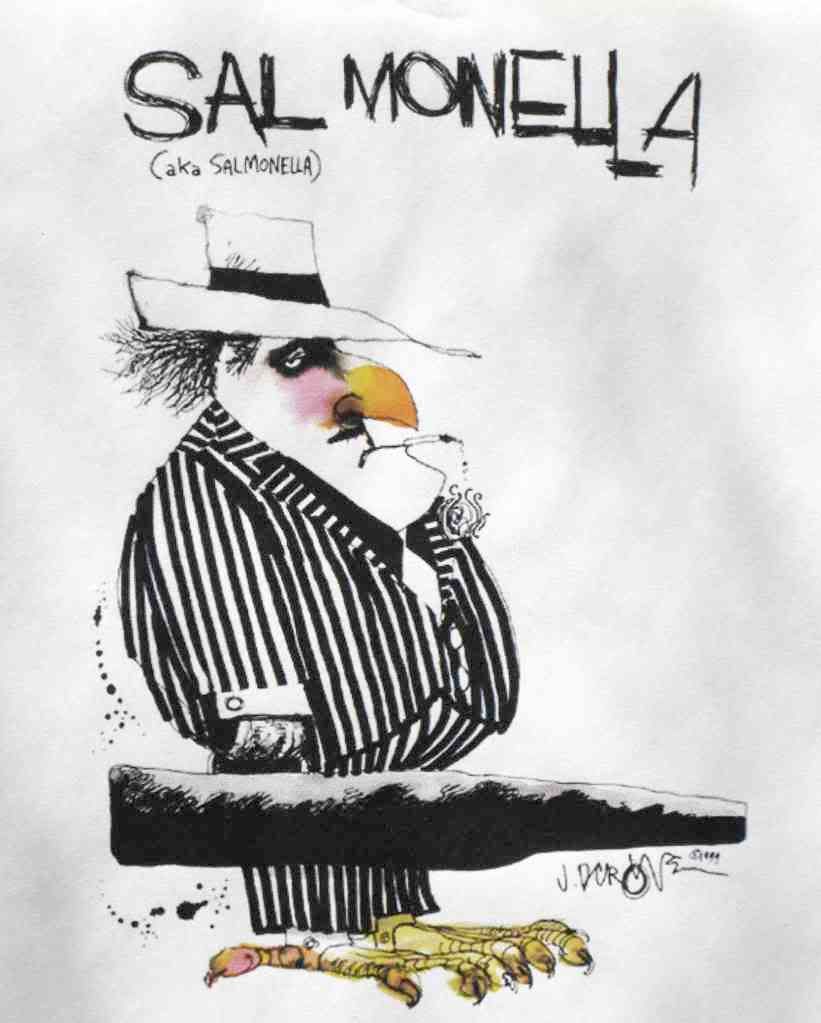 January 7, 2009
January 7, 2009A multi-state outbreak of Salmonella Typhimurium, which has been incubating in the United States since October 2008, has sickened at least 388 people so far, sending 18% of them to hospital.
The victims of this outbreak are spread across 42 states, including Minnesota (30 confirmed cases) and Ohio (50 confirmed cases). As of this evening, federal and state investigators have no leads on the source of the contamination.
All 388 confirmed victims of this outbreak were infected by a single strain of Salmonella Typhimurium, indicating a common source for the outbreak. But finding the source won't be easy.
Recent food poisoning outbreaks suggest several possible scenarios.
- The 2008 Salmonella Saintpaul outbreak was traced to imported produce that was distributed across much of the United States. Other multi-state outbreaks of Salmonella and E. coli O157:H7 have been linked to contaminated lettuce and spinach from the Salinas Valley of California.
- There have been several Salmonella outbreaks traced to frozen, raw or partly cooked chicken entrées that were undercooked by the consumer. Banquet brand pot pies were the source of a strain of Salmonella that infected at least 272 people in 35 states in 2007.
- A contaminated, ready-to-eat processed food may be the source, as was the case in the 2007 Veggie Booty outbreak.
- A contaminated pet food could spark an outbreak. Mars Petcare's dog food was the source of a prolonged Salmonella Schwarzengrund outbreak in 2006 and 2007 that affected 62 people in 18 states.
In October 2008, the West Virginia Department of Agriculture (WVDA) received one or more consumer complaints of dogs becoming ill after consuming pet food purchased at Wal-Mart. The state conducted lab tests on pet food from Wal-Mart and found Salmonella contamination in a sample of cat food and in a sample of dog food.
WVDA issued a "stop sale" order on both products and reported its findings to FDA. The cat food eventually was recalled by Mars Petcare, the manufacturer. Although FDA's Center for Veterinary Medicine investigated the dog food contamination report, no recall notice was ever issued. According to WVDA, the dog food sample contained Salmonella Typhimurium.
This could be nothing more than coincidence. The genetic fingerprint information for the dog food contaminant was never released by WVDA. Nor has the profile of the current outbreak strain been published by CDC. But the timing is right.
Dry dog food has a one-year shelf life, which would be consistent with an outbreak that lasts for several months. And Mars Petcare already has closed one production facility permanently because the company could not rid itself of a chronic Salmonella contamination.
Let's hope that the state of West Virginia, the CDC and the Center for Veterinary Medicine are comparing notes.





No comments:
Post a Comment
Note: Only a member of this blog may post a comment.